When compared to high-carb processed foods, beans are considered as a health food. However, from a low-carb perspective, they contain too mu...
When compared to high-carb processed foods, beans are considered as a health food. However, from a low-carb perspective, they contain too much starch. In fact, the net carb content of most beans and lentils is so high that they belong on the “do not eat” list for keto.
To help you figure out exactly what beans to avoid and what to replace them with, we put together this keto guide addressing the following topics:
- Can you eat beans on keto?
- How many carbs are in beans?
- What about lentils on keto?
- Keto-friendly bean and lentil substitutes
- Soy-free bean alternatives and beanless keto recipes
- What about bean sprouts?
- Key takeaways
Can You Eat Beans on Keto?
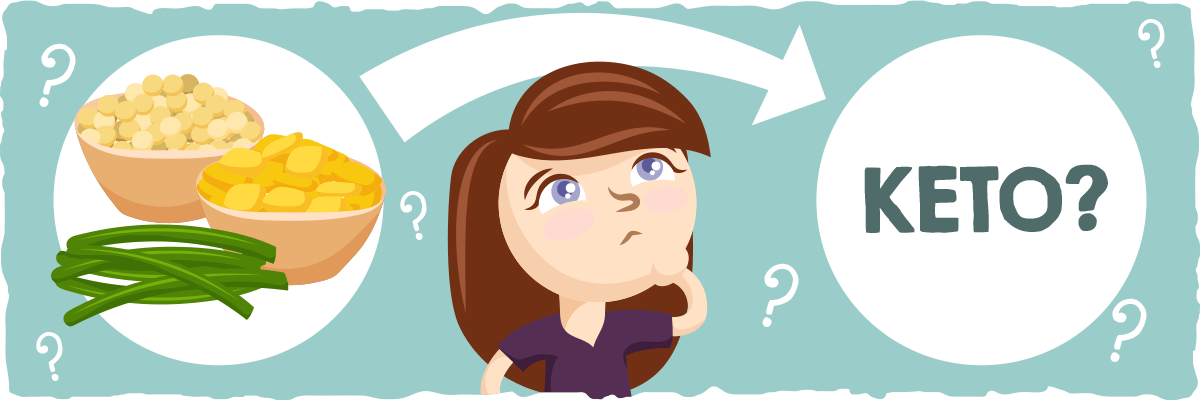
Beans should be avoided on keto.
Though they’re a good source of protein, fiber, vitamins, and minerals, beans are also packed with starch. As you digest them, their starches are broken down into simple sugars and absorbed as net carbs.
How Many Carbs Are In Beans?
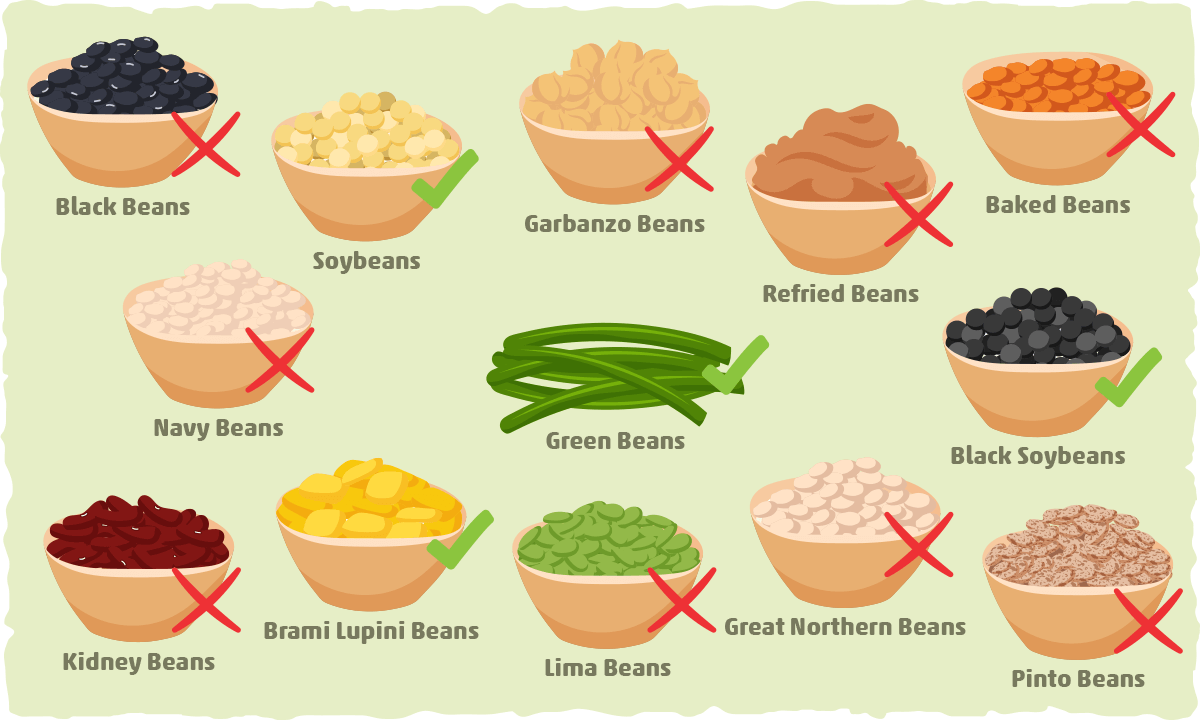
From a keto nutrition perspective, think of each bean as a miniature potato — Packed with starch but comes with other healthy components as well.
In fact, if we look at the net carb count of boiled white potato (~14.3 g in every ½ cup), it falls within the average range of net carbs in beans (between 12 and 20 g per 1/2-cup serving).
Below, we’ll take a closer look at the net carb content of the most popular varieties of beans.
Carbs in Black Beans: Are They Keto?
When it comes to net carbs, black beans are surprisingly similar to white potatoes.
Every ½-cup serving of black beans comes with ~13 grams of net carbs. In other words, they are not keto-friendly.
While restricting carbs, it is best to replace black beans with keto-friendly beans or make beanless keto recipes instead.
Carbs in Pinto Beans
Every ½ cup of cooked pinto beans comes with ~15 grams of net carbs. This means they have more net carbs than white potatoes and are not suitable for keto.
Carbs in Garbanzo Beans: Are Chickpeas Keto?
Have you ever noticed how garbanzo beans (chickpeas) are a lot rounder/fuller than black beans and pinto beans? This is because they are packed with more starch.
In every 1/2 cup of garbanzo beans, there will be roughly 16 grams of net carbs.
Carbs in Refried Beans and Baked Beans: Are They Good for Keto?
Both refried beans and baked beans are not keto-friendly. Even if you find a can with no added sugar, the starch from the beans will still be high enough to impair ketosis:
- Refried beans — A ½-cup serving of refried beans tends to have 12 or more grams of net carbs.
- Baked beans — Even the lowest-carb baked beans around 20 grams of net carbs in every ½-cup serving.
Carbs in Kidney Beans, Navy Beans, Lima Beans, and Great Northern Beans: Keto-friendly or Not?
Every ½-cup of these beans comes with the following net carb counts:
- Kidney beans — 14.6 g
- Navy beans — 4 g
- Lima beans — ~13 g
- Great northern beans — 12.5 g
Simply put, these beans are not keto-friendly either.
How Many Carbs In Green Beans (String Beans)?
Green beans are one of the only true keto beans, with ~3 grams of net carbs in every 1/2-cup serving. They provide us with similar benefits as low-carb vegetables as well.
To add more green beans to your keto diet, try adding them to your favorite keto casserole/entree or make them as a side:
Carbs In Soybeans: Are They Healthy for Keto?
There are three main types of soybeans you are likely to come across: Mature soybeans, green soybeans (edamame), and black soybeans.
Here are the net carbs per ½ cup in each type of soybean:
- Green soybeans — 3.5 g
- Mature soybeans — 3.4 g
- Black soybeans — 1 g
From a carb content perspective, all three are keto-friendly beans.
However, it is also important to consider your sensitivity to soybeans and the quality of the product you purchase for keto.
The highest quality soybean will be non-GMO and organic. In contrast to their GMO counterparts, these soy products will be free from chemical pesticide residues.
That being said, even the healthiest soy products contain natural compounds that a small subset of the population may be sensitive to and/or allergic to. For this reason, we recommend monitoring your overall health and wellbeing if you increase your consumption of soy and soy-based products (such as tofu and tempeh).
What about Lupini Beans?
Since one particular type of lupini bean isn’t being mass-produced (like most of the beans mentioned earlier), there may be a significant variation between the starch content of one lupini bean product versus another.
For example, if you buy imported lupini beans made by Delallo, you’ll get 13.5 g of net carbs in every ½-cup serving (which is not keto-friendly). In contrast, the lupini bean products made by Brami contain such a low amount of starch that they can list their beans as having zero grams of net carbs.
Put more simply: If you are looking to buy lupin beans, lupin flour, or lupin-based hummus for keto, make sure to double-check how many carbs and net carbs are in that particular product.
Overview of Carbs in Common Bean Varieties
For your convenience, we’ve included the following table with the carb info for the beans we looked at so far:
| Bean variety | Total carbs (in grams per ½ cup) | Net carbs (in grams per ½ cup) |
| Black beans | 20.4 | 12.9 |
| Navy beans | 23.9 | 14.4 |
| Kidney beans | 20.2 | 14.6 |
| Pinto beans | 22.4 | 14.7 |
| Green beans | 4.9 | 2.9 |
| Garbanzo beans (chickpeas) | 22.5 | 16.3 |
| Lima beans | 19.7 | 13.1 |
| Great Northern beans | 18.7 | 12.5 |
| Green soybeans (edamame) | 7.5 | 3.5 |
| Mature soybeans | 8.6 | 3.4 |
| Black soybeans | 8.0 | 1.0 |
Note: All information in this table is for a ½ cup of boiled, drained beans, without salt.
In general, there are hundreds of varieties of edible beans, and most of them are not keto-friendly. When in doubt, make sure to double-check the label and calculate the net carbs yourself.
The same principles apply to the many varieties of lentils as well.
Carbs in Lentils: Are They Keto?
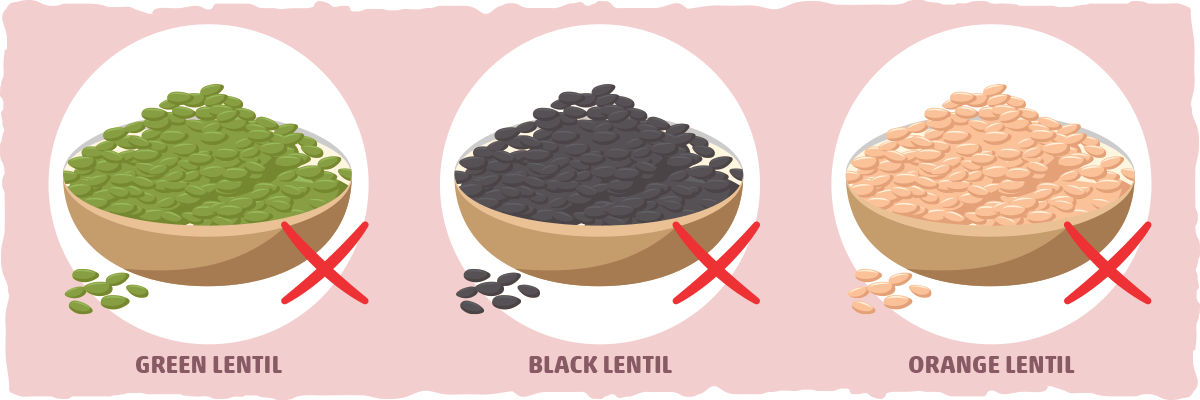
Lentils and beans are very similar in terms of macronutrients. Each lentil is like a miniature version of a bean, with high-protein skin and starchy insides.
Though different types of lentils can vary slightly in their nutrient contents, they tend to contain around 20 g of total carbs and 12.2 g of net carbs in every 1/2 cup.
In other words, as with most bean varieties, lentils are packed with too many carbs for keto.
Keto-friendly Bean and Lentil Substitutes: Black Soybeans and Green beans
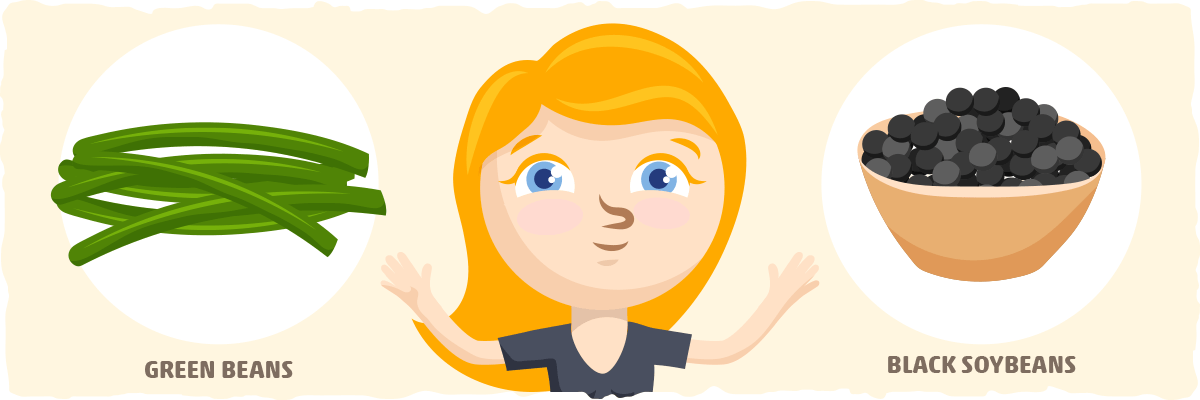
On the keto diet, it is best to go beanless or use the lowest carb beans — black soybeans and green beans — as substitutes for their starch-filled cousins.
While green beans are typically prepared more like a vegetable, black soybeans are the best keto-friendly replacement for other beans in soups, bean dips, refried beans, baked beans, and other bean-based recipes.
That being said, if you are looking to avoid or limit soy for any reason, we’ve included several other bean alternatives and beanless keto recipes below.
Soy-free Bean Alternatives and Beanless Keto Recipes
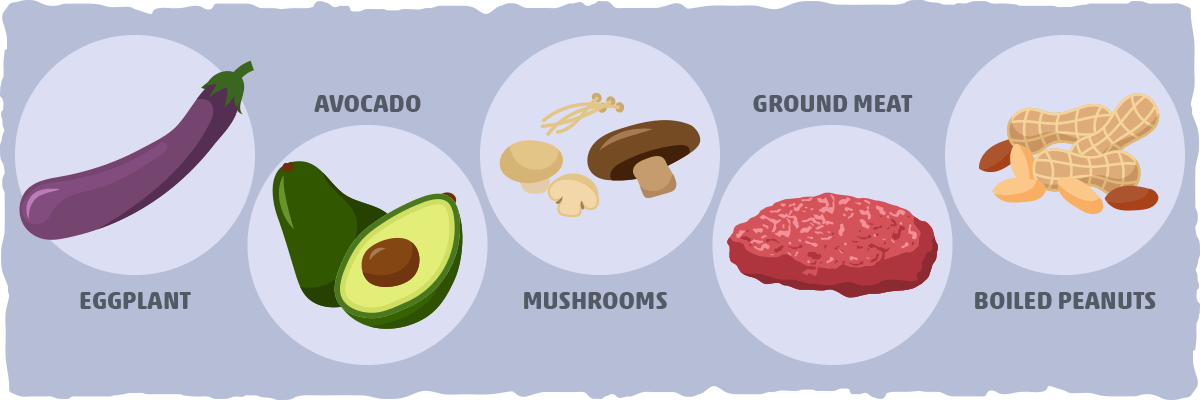
If you’re looking for soy-free bean substitutes that will mimic their texture, here are some tasty alternatives:
- Diced eggplant is a healthy, low-carb alternative that you can use to add more bulk to your dishes.
- If you’d like to have some keto Mexican food, opt-out of high-carb refried beans or bean dip with your meal and choose guacamole, smashed avocado, or chopped avocado salad instead.
- Cooked mushrooms are very low in carbs and can be used in place of beans in soups, stews, and chili. They will add an extra layer of umami to your meal as well.
- Ground meat. The perfect bean replacement for soup and chili recipes. You can also use leaner or fattier meat depending on how much fat and protein you want in your soup or chili.
- Boiled peanuts. Boiled peanuts have a similar texture to that of cooked beans with only ~6 g of net carbs in every ½-cup serving.
To go 100% bean-free without missing out on your favorite bean-based dishes, try making these keto recipes as well:
- Beanless Low-carb Chili — A thick, meaty keto-friendly chili with all the flavors and textures you get from the standard, bean-based version of the dish.
- Beanless Keto Hummus Recipe — Simply by replacing the chickpeas with roasted cauliflower, you can make a creamy and delicious hummus dip (without all of the excess starch).
- Creamy Keto Taco Soup — Though beans are often added to make soups hearty and satiating, this is no longer necessary when you use ground beef with an avocado garnish on top.
- Keto Pork Carnitas — Pork carnitas are often accompanied by tortillas, rice, and refried beans or baked beans, turning this keto meat dish into a carb-heavy ketosis killer. As long as you skip the high-carb foods in favor of keto tortillas and guacamole, you can have a satisfying carnitas meal without missing out on your favorite flavors and textures.
For more ideas on how to replace the beans in your favorite cuisines, check out the following keto guides:
What About Bean Sprouts?
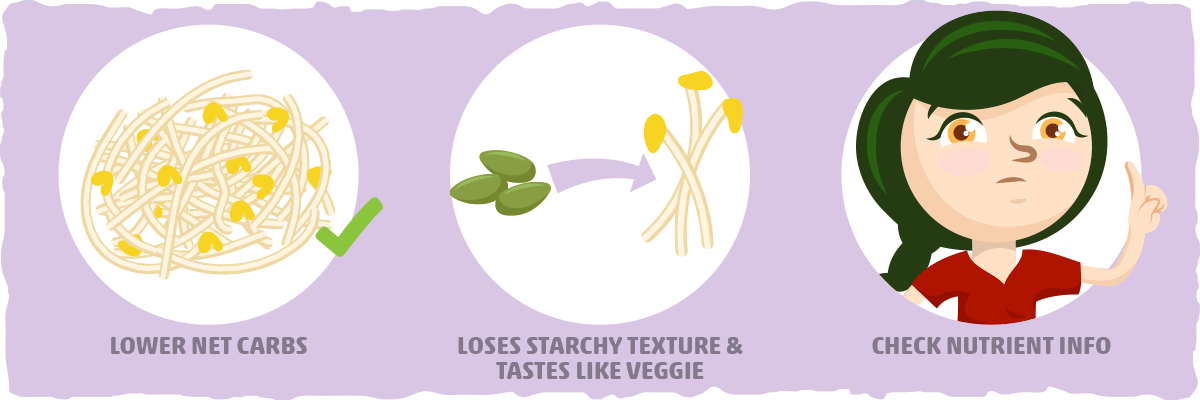
During the sprouting process, the beans will use their stored starch to provide the energy necessary to grow into a plant. As a result, the sprouts will have a significantly lower net carb content, resembling a low-carb vegetable rather than a high-starch potato.
This means you can reap the benefits of beans while staying in ketosis. Unfortunately, this also means that they will taste more like vegetables and lose their starchy texture.
As with other foods you eat on keto, double-check the nutrition info of your bean sprouts to make sure they’ll fit into your carb limit.
Key Takeaways: Beans, Lentils, and Their Keto Alternatives
Most beans and lentils are too high in carbs to fit into the keto diet. This includes the following bean varieties and products:
- Black beans
- Pinto beans
- Garbanzo beans
- Baked beans
- Refried beans
- Kidney beans
- Lima beans
- Great northern beans
- Some varieties of lupini beans
As with anything you have on keto, always make sure to check the nutrition labels.
The best keto bean option is black soybeans, which you can use as a direct replacement for high-carb beans. However, if you want to go soy-free, there are several other delicious alternatives, including mushrooms, diced eggplant, avocado, ground meat, and boiled peanuts.
With these low carb bean alternatives, there’s no need to shy away from bean recipes while on keto. In fact, you can even make your favorite bean-based dishes without the beans:
If you’re looking for more keto meal ideas or a complete meal plan, we’ve included more resources below:
- Free Keto Recipe Collection — Over 600 easy keto recipes for breakfast, lunch, dinner, and more
- Keto Meal Planning App — An app that does most of the work for you. All you have to do is prep your meal, eat it, and watch your body transform.
Sources
- The Ruled.me Food Policy — Ruled.me
- Composition of Lupinus albus — Cereal Chemistry
- Soy and phytoestrogens: possible side effects — NCBI
- Clinical studies show no effects of soy protein or isoflavones on reproductive hormones in men: results of a meta-analysis — Fertility and Sterility
- SELF Nutrition Data | Food Facts, Information & Calorie Calculator — NutritionData
The post Are Beans Keto? Full Guide to Beans and Their Keto-friendly Alternatives appeared first on Ruled Me.
via Keto Diet




COMMENTS